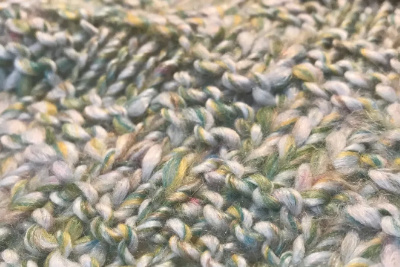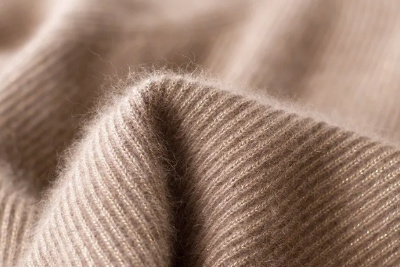
The textile industry is struggling to survive the first quarter under the continuous impact of the epidemic
At the beginning of 2020, the new coronavirus pneumonia epidemic broke out in the country, and then there was a global spread.
Release time:
2020-05-13
At the beginning of 2020, the new coronavirus pneumonia epidemic broke out in the country, and then there was a global spread. Various restrictive measures adopted by countries to combat the epidemic caused the international economic and trade cycle to be blocked. In the first quarter, textile companies ’domestic and foreign market orders were significantly reduced. The efficiency situation has been seriously declining, production and operation have encountered unprecedented difficulties, and investment and development confidence are obviously insufficient. It is understood that the main operating indicators of the textile industry in the first quarter all showed a negative growth trend, and maintaining stable operation is facing a greater test .
Actively promote the production of materials for prevention and control of resumption of production and production
Since the outbreak of the New Coronary Pneumonia epidemic, in the face of shortages of key materials such as protective masks and medical protective clothing, textile companies have overcome difficulties such as insufficient return of staff and poor transportation and logistics, and have promoted orderly resumption of production. It is understood that as of the end of April, the rate of corporate resumption of work reached about 90%. During the epidemic, some key textile enterprises transformed their production of materials such as masks and protective clothing, which provided a powerful material guarantee for the whole society.
The starting load of the textile industry has gradually recovered, but due to the epidemic situation, the capacity utilization rate is slightly lower than normal, and the industrial added value has declined compared with the same period last year. According to data from the National Bureau of Statistics, the capacity utilization rates of the textile industry and chemical fiber industry in the first quarter were 67.2% and 74.4% respectively, slightly better than the national manufacturing capacity utilization rate of 67.2%, but they were 10.5 and 8.8 percentage points lower than the same period of the previous year. In the first quarter, the added value of the textile industry above designated size decreased by 16.5% year-on-year, and the growth rate decreased by 21.9 percentage points over the same period of the previous year. In the main links of the industrial chain, due to the concentrated production of anti-epidemic materials in the industrial textile industry, the industrial added value in the first quarter increased by 11.5% year-on-year, the growth rate ranks first in the entire industrial chain; the growth rate of production in other links of the industrial chain has slowed significantly, including clothing And the home textile industry is particularly affected by the sluggish demand. The industrial added value decreased by 19.7% and 17.3% year-on-year, and the textile machinery industry decreased by 31.5% year-on-year, indicating that the textile industry lacks investment confidence at this stage.
The domestic and foreign market demand is obviously insufficient
During the epidemic prevention and control period, the prevention of epidemic measures by closing physical businesses, isolating homes, and reducing social activities significantly reduced domestic consumption of apparel products, and both online and offline sales declined. According to data from the National Bureau of Statistics, in the first quarter, the retail sales of apparel, shoes, hats, and knitwear for units above designated size in China decreased by 32.2% year-on-year, and the online retail sales of retail products fell by 15.1%, 35.5 and 34.2 percentage points lower than the same period last year.
Due to the increasingly serious situation of prevention and control of overseas epidemic situations, major export markets such as the United States and Europe have been shut down, and consumer demand has been weak. Since late March, China ’s textile enterprises have sharply reduced their export orders, overseas customers have cancelled orders, and delayed receipts have continued to increase. Industry exports The situation is grim. According to customs data, total exports of textiles and apparel in the first quarter were US $ 47.88 billion, down 17.8% year-on-year. Among them, textile exports were US $ 24.04 billion, down 15.3% year-on-year; clothing exports were US $ 23.84 billion, down 20.2% year-on-year. Exports to traditional markets and emerging markets both showed a downward trend. In the first quarter, China ’s textile and apparel exports to the United States, Japan and the EU decreased by 29.2%, 16.8% and 14.3% respectively year-on-year, and exports to countries along the “Belt and Road” decreased by 13.6% year-on-year .
Operation quality and investment show a downward trend
In the case of severely insufficient market demand, the revenue of textile companies has fallen sharply, the burden of cost expenditure is heavy, and the operating pressure continues to increase. According to data from the National Bureau of Statistics, in the first quarter, 33,000 textile enterprises above designated size achieved operating income of 831.88 billion yuan, a year-on-year decrease of 25.4%; the total profit reached 21.81 billion yuan, a decrease of 44.2% year-on-year; %. The turnover rate of finished products and total asset turnover slowed down by 35.5% and 28.3% year-on-year, respectively. The ratio of finance, management and sales expenses was 7.9%, which was significantly higher than the normal level of 6-7%.
Due to the impact of the epidemic, the pressure on the capital turnover of textile enterprises is outstanding, and the scale of industry investment has been significantly reduced. According to data from the National Bureau of Statistics, the fixed asset investment in the textile industry in the first quarter decreased by 38% year-on-year. In view of different industries, the investment in textile industry, chemical fiber industry and apparel industry decreased by 37.1%, 45.8% and 19.2% respectively year-on-year. By region, the investment in chemical fiber industry in Jiangsu and Shandong provinces in the east increased by 13% and 20.6% year-on-year, respectively, the investment in the textile industry in Anhui province in the middle increased by 3.1% year-on-year, and the textile, clothing and chemical fiber industries in Sichuan province in the west The increase of 91.9%, 21.4% and 45.9% respectively is the regional bright spot under the current shrinking investment scale of the whole industry.
Maintain steady and healthy development with outstanding pressure
At present, China's macroeconomic operations are gradually on the right track in the normalization of epidemic prevention and control, and the order of production and living has been quickly restored. However, the global epidemic prevention and control situation is still grim, and the development prospects are still unclear, making the development of China's textile industry significantly more difficult and challenging, and the pressure to maintain stable operation will still be very prominent.
From the perspective of the international environment, the effectiveness of overseas epidemic prevention and control has been lower than expected, the downside risks of the world economy have increased, various uncertainties and uncertainties have increased significantly, and the continued weak overseas demand has been particularly significant for the export situation. From the perspective of the domestic environment, the downward pressure of the macro economy and the periodic impact brought by the epidemic are superimposed, and the task of normalizing the prevention and control of the epidemic is still arduous. Affected by insufficient demand and poor economic circulation, a large number of textile enterprises will still face difficulties such as insufficient orders, declining profits, and tight capital chains. The pressure on small and medium-sized enterprises to survive is particularly prominent. The pressure on the textile industry to stabilize employment and increase growth has also increased. However, the basic trend of China's economic stability and long-term improvement has not changed, and the huge domestic market will continue to play the role of "ballast stone" to provide core support for the development of China's textile industry.
Latest Blog





